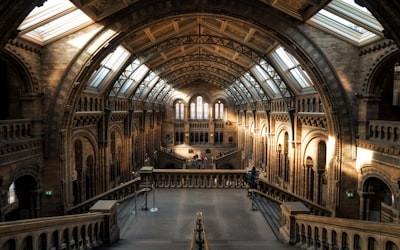The History of the Workplace - Modern Workplace
Curated from: condecosoftware.com
Ideas, facts & insights covering these topics:
7 ideas
·2.97K reads
7
Explore the World's Best Ideas
Join today and uncover 100+ curated journeys from 50+ topics. Unlock access to our mobile app with extensive features.
The 1950s workplace - the open-plan office
At first, office layouts were influenced by the production or factory line. Rows of desks fitted tightly together, but managers and executives had private offices with windows so they could supervise workers.
In the 1950s, the workplace design style became less rigid. The emphasis was placed on meeting the needs of the workforce with a more fluid design. It resulted in a more social environment where collaboration between teams increased.
47
1.81K reads
The 1960s - office technology
The Action Office emerged in the 1960s. It included more freedom of movement, greater privacy, and personalised space. With time, employees each had a high, three-sided vertical division to define their space.
Office tech started to change and included manual word processors, the first computer mouse, RAM chip and handheld calculators.
In the US, the introduction of the 1964 Civil Rights Act caused a boom in jobs available to women.
43
218 reads
The 1970s - Equal Pay Act
Office space was designed to focus on enabling individual workers to work creatively and more autonomously. Users health and comfort were more prominent. Computers were introduced into the workplace.
Women began to gain more equality in the workforce through the Equal Pay Act, but women still did more menial office jobs and left the work once married to stay home full-time.
43
169 reads
1980s - The cubicle farm
This decade saw the office layout moving towards productivity and profitability. Cubicles were cheap, effective and increased focus.
Corporate culture became a priority. Workers started to dress in power suits, and employees began talking about a work-life balance. The computer started to gain popularity in the workplace.
43
208 reads
1990s - The World-Wide Web
Office design became more utilitarian and functional - even dull, while computers transformed the way people worked.
Improvements in connectivity and the start of the world-wide-web meant that computers became essential for many employees. In 1998, Google was born.
43
183 reads
2000s - Office technology
The 2000s saw a time of evolution and revolution. Technology and high-speed connectivity became common. The smartphone was brought to mass market.
Open-floor office plans started to rise. In addition, co-working spaces became more popular, allowing employees to work in alternative places, such as in coffee shops or remotely from home.
Tech startups introduced casual clothes in the office, pressing the idea that people's work and feelings are more important.
43
149 reads
2010s - Technology evolution
As technology advanced, employees began to demand flexibility in how, when and where they worked.
A huge shift occurred in office design. Bright and vibrant offices evolved with mixed spaces to work. Technology became woven into the work, from video conferencing equipment to interactive screens to support the workplace experience.
42
234 reads
IDEAS CURATED BY
Weston A.'s ideas are part of this journey:
Learn more about teamwork with this collection
How to create a productive workspace at home
How to balance work and personal life while working remotely
How to maintain focus and motivation while working remotely
Related collections
Similar ideas
4 ideas
A short history of the office
theconversation.com
10 ideas
10 Inventions That Shaped The Workplace
fastcompany.com
Read & Learn
20x Faster
without
deepstash
with
deepstash
with
deepstash
Personalized microlearning
—
100+ Learning Journeys
—
Access to 200,000+ ideas
—
Access to the mobile app
—
Unlimited idea saving
—
—
Unlimited history
—
—
Unlimited listening to ideas
—
—
Downloading & offline access
—
—
Supercharge your mind with one idea per day
Enter your email and spend 1 minute every day to learn something new.
I agree to receive email updates







